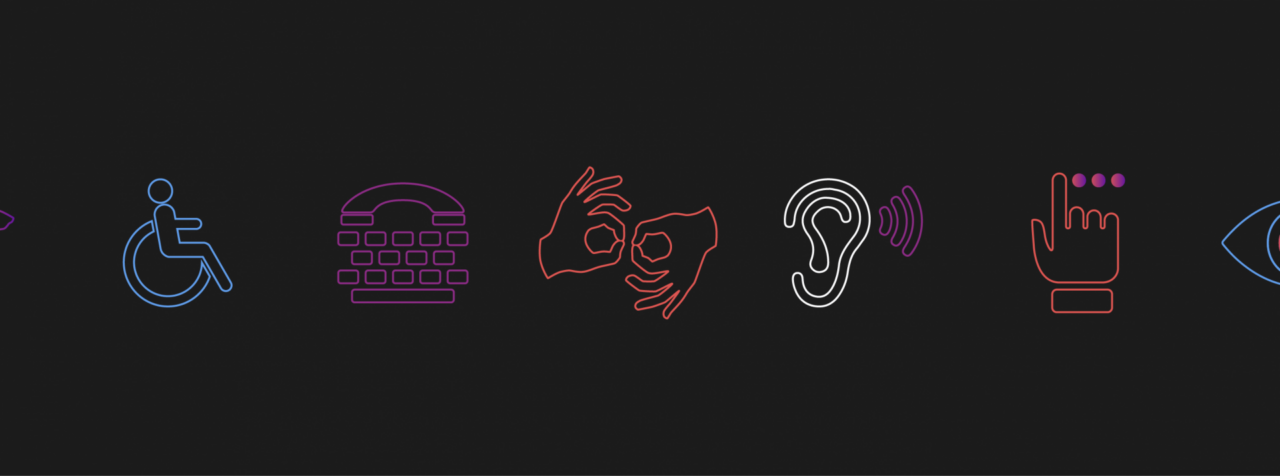07.26.21 By Bridgenext CX Team

On July 26th we acknowledge National Disability Independence Day, a day that celebrates the signing of the Americans with Disabilities Act, an important milestone for millions of Americans living with a disability in this country. According to U.S. Census data, over a quarter of all Americans are living with a diagnosed disability, and over half of those with a disability describe it as severe. Understanding how these differences affect your audience is not only proof of your empathy, it’s a savvy business decision. Let us tell you why.
Accessibility is the term used to refer to creating a world where all people, handicapped or not, can have the same experience—both online and in person. Accessibility has always been important, but it’s recently come to the forefront because of updates to the Americans with Disabilities Act (ADA).
Passed in 1990, the ADA was put in place to ensure that all Americans had equal access to the world they lived in.
What does this mean for brands? It means that every store and site, no matter the complexity or size of the company that runs it, needs to be compliant—both because it’s the right thing to do and because not being accessible puts them at risk for legal ramifications. We’ll walk through some of the main reasons marketers should always keep accessibility in mind, especially when developing a new website or new content, or when designing a new store.
The most important reason for a brand to make sure its site and stores are ADA compliant is simply because it’s the right thing to do. Everyone deserves to have equal access to the places they want to visit online and in person, and ADA compliance helps businesses offer that. It makes your site and stores more usable while also showing that your brand is dedicated to inclusivity. Accessibility is a win-win for both brands and their customers.
Proper accessibility doesn’t just help those who need assistance; it can also make your business (both in-person and online) more usable for a variety of groups. When a brand ensures that its marketing is accessible, it’s also implementing tactics that make it easier for the general population to enjoy them. Clear, organized sites that can be utilized in a variety of ways allow everyone to do what works best for them—and that kind of flexibility and thoughtfulness on a brand’s part can really help build loyalty. The same can be applied to your brick-and-mortar stores.
This was already mentioned above, but it’s a pretty simple cause and effect: If someone can’t use a brand’s site, they aren’t going to purchase from them. One study found that 71% of individuals with disabilities will abandon a site if it’s difficult to use rather than trying to work through it. That statistic resulted in an estimated $14.4 billion in lost revenue.
Now that we’ve covered the main reasons why accessibility matters, you might be thinking, “But where do I start?” Fear not. We’ve put together six ways to help kick-start your accessibility journey.
Be aware of the different types of accessibility features that should be considered. The most common disabilities are visual, hearing, cognitive, and motor. Keep in mind that 70% of disabilities aren’t visible, so understanding how these affect your customers and employees is imperative.
Ready to make your website and brick-and-mortar stores accessible for all? Then start by understanding what features you’ll need to make it happen. In-store, some changes include making sure that you offer ramps and automatic doors, maintain a floor space free from obstacles, and display signs that use sans serif fonts in a large-enough size (think 72 points) for everyone to read. Online, features such as alt text, adding keyword relevant links and header titles, and making the overall navigation intuitive, are all must-haves.
Voice is a helpful accessibility feature for many. If you’re selling a product or creating an ad at the end of the sales funnel, make sure your site, campaign, and app all respond to voice commands. If you’re developing your own voice assistant, remember that not everybody’s voice sounds the same, and being inclusive means taking that into account, too.
Accessible by design—that should be everybody’s motto. Don’t wait until the end of the process to make your store accessible; rather, make it your priority. If you don’t know where to start, you can hire consultants who specialize in accessibility — Bridgenext (formerly DEFINITION 6) can help.
We don’t need to say that video is the king of the content realm—you already know that. But what you may not know is that many of your viewers might have some sort of disability, from being visually impaired to having hearing loss. So when you create some video content, make sure everyone can enjoy it by including closed captions and audio descriptions on all of your videos.
Colors can do more than create a brand identity—they can create a system that informs people. For example, green/red are often used to indicate positive/negative. However, vision-impaired people may not be able to differentiate the two colors, so be sure to include written labels too.
Are you ready to make your business accessible for everyone? Then reach out to us. We can help you stay at the forefront of innovation. We can make technology more human, together.